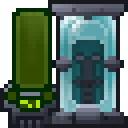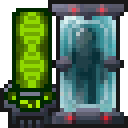Guide to Medical
So you want to be a doctor?
Well there's a few things you should know about working in the medical department first!
This guide will cover everything regarding basic medical procedures, for surgery or cloning see the Guide to Surgery or Guide to Cadavers
Tools of the Trade 
There's a plethora of equipment available to any aspiring doctor, most of which can be found in the NanoMed dispenser. 
| Icon | Name | Description |
| Latex Gloves | A pair of latex gloves, lowers infection chances when performing surgery and handling patients | |
| Sterile Mask | A sterile mask, lowers infection chances when performing surgery and provides mild protection against airborne viruses. Also masks the smell of the dead | |
| Medical Belt | A medical belt, it can store almost any small medical item such as trauma kits, syringes, or beakers. | |
| Medical HUD | A standard issue medical HUD. This will allow you to immediately see how injured someone is. | |
| Adv. Trauma Kit | An advanced trauma kit, used for any form of physical injury. Heals 25 brute damage per use and stops bleeding. | |
| Adv. Burn Kit | A burn kit that can double as a trauma kit in a pinch, specialized for burns. Heals 25 burn damage per use. | |
| Health Analyzer | The bread and butter of the medbay, gives detailed information on injuries. It's suggested you also get the upgrade  at the NanoMed. at the NanoMed.
| |
| Syringe | Can take blood samples or be filled with reagents and used manually or fired by a syringe gun. | |
| Defibrillator | A defibrillator, used for reviving recently deceased patients. Patients who committed suicide cannot be revived. | |
| File:Crewmonitor.png | Handheld Monitor | A handheld version of the crew monitor computer, lets you see everyone's suit sensors on the fly. |
| File:IVdrip.png | IV Drip | Used for giving or taking blood. Can also be used to inject chemicals, efficiently produce synthmeat. |
A Breakdown of Basic Chemicals 
Whilst working in the medbay there is a wide variety of chemicals you might encounter. They can be found in the Smartfridge, southwest corner of Chemistry Lab.
This list doesn't cover nearly all the chemicals, it's a good primer on chems you'll frequently encounter and need. To see every chemical, check out the Guide to Chemistry.
Important: Corpses cannot metabolize pills/liquids. Only patches work on them (except for Strange Reagent).
| Icon | Name | Description |

|
Styptic Powder | Styptic Powder will heal any brute injuries. Use it in a patch form or via the Sleepers. It's useful for patching up corpses before attempting to revive them. |
|---|---|---|

|
Salicylic Acid | Salicylic Acid slowly heals brute damage and can be used as a painkiller during surgery. |

|
Synthflesh | Synthflesh heals both brute and burn damage. It only works when in patch form. It's useful for patching up corpses before attempting to revive them. |

|
Saline-Glucose Solution | Saline-Glucose Solution heals both brute and burn damage and restores blood (provided the patient is a blood-having species.) |

|
Silver Sulfadiazine | Silver Sulfidiazine heals burn damage. Use it in a patch form or via the Sleepers. It's useful for patching up corpses before attempting to revive them. |

|
Charcoal | Charcoal slowly purges all other reagents from the patient, and also heals toxin damage. Do NOT administer other medicine while Charcoal is in their system or it will purge them as well. Administer 10-15 at maximum. Its stronger version is Pentetic Acid. |
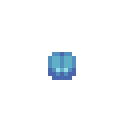
|
Salbutamol | Salbutamol slowly fixes oxygen damage. Its stronger version is Perfluorodecalin. |

|
Epinephrine | Wakes up the patient and lowers the duration of paralysis, stun and weakness. It caps oxygen damage at 35. If their health is between -65% and -10%, it heals brute, burn and toxin damages. Extremely recommended for the Paramedic. |

|
Morphine | Used for surgery for non-breathing species (or species breathing special air). It causes addiction with a high chance; cure it by putting the patient into a Sleeper for one minute (without injecting them with anything). Do not use more than 30 units. Its stronger version is Hydrocodone which does not cause addiction at all. |

|
Ether | After a long delay (metabolizing 4.1 units), it will knock out the patient for 28 seconds. It's useful for anesthetizing patients who cannot be put under with anesthetic tanks such as a Vox, a Slime Person or a Plasmaman. Most often Hydrocodone or Morphine is preferred over Ether. |
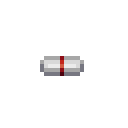
|
Mannitol | Mannitol heals brain damage which often occurs after suffocation, cloning or staying dead. Ten unit is usually enough. |
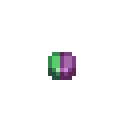
|
Mutadone | Mutadone cures all genetic defects, often caused by cloning. Do not use more than one unit. |
| File:Beakercryox.png | Cryoxadone | Cryoxadone is used in cryotubes and heals oxygen, toxin, brute, burn, and cloning damage. It only works if the patient has a low body temperature, always turn on the cryotubes' freezers! Additionally, adding Blood to Cryoxadone (with a syringe or an IV drip) will create synthetic meat, the fuel of the cloner. |

|
Mitocholide | Mitocholide heals organ damage for a very small amount. It is also used for debridement and reviving dead organs. |
| Oculine | Heals eye and ear damage and has a chance to cure blindness and deafness. If they are genetically blind or deaf, it is advised to use Mutadone instead. | |
| File:Strangepill.png | Strange Reagent | An extremely dangerous medicine which gibs bodies that have more than 150 combined brute, burn, and genetic damage when ingested. Gibbing some species can be round-ending for them so administer it with caution. Requires 1 unit to be effective. It revives a corpse instantly. It causes a random amount of toxin, brute, and burn damage, 50 cloning damage and necrosis (dead limbs/organs) based on the time they spent dead. Always have Mitocholide ready before you use it. |
Damage Types and Basic Treatments File:Advkit.png
Most damage will fall under four major categories: Suffocation, Toxin, Brute, and Burn. These will show up on the Health Analyzer and in low amounts are very easily treated. There are also treatment kits for each of these categories located within medical storage.
Important: Certain species have to be treated differently than others. Failure to do so can and will lead to their death. See Racial Differences for the special treatments.
This shows up as a BLUE number on the Health Analyzer and Crew Monitoring Console
Suffocation results from being in areas with low oxygen, low blood count, certain chemicals or severe damage to the heart/lungs.
- Areas with low oxygen: Drag and drop the patient on your character to open their inventory. Place a breath mask on their "Mask" slot and an (emergency) oxygen tank in their "Backpack" slot. Click on "Set internals". This only works on species that breathe air. Everyone has a "box" in their backpack which has both the breath mask and an oxygen tank.
- Low blood count: Check their blood type with your Health Analyzer, take a Blood Bag from a freezer (found west of the Sleepers or in the surgery rooms). Put the blood bag on an IV drip, then drag and drop the IV drip on the patient. Administer the corresponding type of blood: do not give O- to everyone and make sure the types are compatible or it will kill them.
- Certain chemicals: Chemicals like Cyanide, Pancuronium and overdosed Histamine can cause suffocation. Purge them with Pentetic Acid, Charcoal or with dialysis.
- Severe heart/lung damage: Fix their organs via organ manipulation surgery. Make sure they don't die during the process.
- Healing oxygen damage: Administer Perfluorodecalin or Salbutamol to temporarily heal oxygen damage. Epinephrine and CPR will also slow progress of suffocation on critical patients. (On help intent, click on the patient with nothing in your hands to administer CPR).
This shows up as a GREEN number on the Health Analyzer and Crew Monitoring Console
Toxin damage can be easily identified by the person constantly taking damage or vomiting. It is caused by a damaged liver, ingesting narcotics or toxins, overdosing on certain medicines, getting the wrong blood type, having an infection or septic limbs/organs or by radiation.
- Damaged Liver: Administer enough Pentetic Acid or Charcoal to reduce their toxin damage to (and keep at) zero and fix their liver with organ manipulation surgery in the meantime.
- Narcotics, toxins and overdose: Purge the chemicals with Pentetic Acid, Charcoal or with dialysis.
- Wrong blood type: Use dialysis to get the wrong type of blood out of their system.
- Infection and septic limbs/organs: Administer Spaceacillin in case of infections. Fix septic limbs/organs with debridement surgery or amputate the limb until it can be fixed.
- Radiation: Use Potassium Iodide or Pentetic Acid to reduce radiation. Keep the patient isolated from others to avoid irradiating them. If they were severely radiated, administer Mutadone to fix their possible genetic defects.
- Healing toxin damage: Administer Pentetic Acid or Charcoal.
Brute Damage File:Brutekit.png
This shows up as a RED number on the Health Analyzer and Crew Monitoring Console
Brute damage can range from a scratch to physical trauma. It can lead to broken bones, internal bleeding, severe blood loss and organ damage.
- Broken bones: Fix their bones with bone repair surgery.
- Internal bleeding: Fix their internal bleeding with internal bleeding surgery. Look out for their blood level and if it is too low, refer to the next point.
- Severe blood loss: Check their blood type with your Health Analyzer, take a Blood Bag from a freezer (found west of the Sleepers or in the surgery rooms). Put the blood bag on an IV drip, then drag and drop the IV drip on the patient. Administer the corresponding type of blood: do not give O- to everyone and make sure the types are compatible or it will kill them. Administer Perfluorodecalin or Salbutamol if they start choking.
- Organ damage: Fix their organs with organ manipulation surgery. Brain damage can be fixed with Mannitol, eye and ear damage can be fixed with Oculine.
- Healing brute damage: Shove the patient into a cryotube (east of Sleepers), into a Sleeper (and use Styptic Powder, give them Saline-Glucose Solution or [[Salicylic Acid. If they are dead, use Styptic Powder patches, Synthflesh patches or an Advanced Trauma Kit (by targeting the injured body parts) on them. It is advised to save the patches for corpses and treat living patients with the first two methods.
Burn Damage File:Firekit.png
This shows up as a ORANGE number on the Health Analyzer and Crew Monitoring Console
Burn damage can result from fire, electrocution, energy weapons, or exposure to extreme cold.
- Patient is on fire: Grab a fire extinguisher from a cabinet (white box on the wall), activate the extinguisher in your hand to remove the safety and click the tile of the patient.
- Extreme body temperature: Shove them into a cryotube to inject them with Cryoxadone which heals if the patient is supercooled. It also cools down patients if they are too hot. Teporone can also stabilize their body temperature (though it is mostly recommended for the Paramedic.)
- Healing burn damage: Shove the patient into a cryotube (east of Sleepers), into a Sleeper (and use Silver Sulfadiazine. If they are dead, use Silver Sulfadiazine patches, Synthflesh patches or an Advanced Burn Kit (by targeting the injured body parts) on them. It is advised to save the patches for corpses and treat living patients with the first two methods.
Some damage does not show up in any category, but will show that the person is injured when checked with a Health Analyzer
Slimes in Xenobiology, non-upgraded cloners, Strange Reagent and being dead cause genetic damage. Stamina damage is most often caused by non-lethal weapons. Hallucinations can occur from entering a radiation belt, ingesting narcotics or having a genetic defect.
- Healing genetic damage: Shove patient into a cryotube. Cryoxadone heals genetic damage. If patient still has a living slime on them, use a fire extinguisher to kill the slime (water is lethal for them).
- Healing stamina damage: It is recommended to just wait until it wears off. In emergency cases it can be healed by Ephedrine.
- Healing hallucinations: If the station entered a radiation belt which causes hallucinations, just wait until it passes. If it is caused by narcotics, administer Pentetic Acid or Charcoal to remove them or use dialysis. If it is a genetic defect, use Mutadone.
Notes
- Infections can occur from untreated, open wounds or by embedded objects. Make sure you close every incision during surgery. They can develop into acute infections that will eventually lead to necrosis. If the patient has an embedded object in them, remove it with surgery. Necrosis can be treated by debridement or by Mitocholide (see above).
- Broken bones cause organ damage over time. If a skull, chest or a groin is left untreated for a long time, it will cause organ failure (which leads to an immediate death).
- Low blood count is 80%. Everything below that will cause the patient to suffocate to death. Being well-fed increases blood production.
- Brain damage manifests in many ways, such as the inability to use machines, yelling, screaming seemingly incomprehensible things and so on. Some patients might be crazy by default but most often they shout because they need Mannitol.
- Corpses should be treated as soon as possible. If defibrillation/cloning does not work (see below) and they are waiting for being revived with Strange Reagent, it is a good practice to ask the Coroner for injecting them with Formaldehyde. It will stop their corpse from rotting.
Sleepers  File:SleeperConsole.png
File:SleeperConsole.png
Sleepers are useful albeit slow machines. They can cure addictions and inject patients with specific chemicals. Cryotubes almost always heal faster than Sleepers except for toxin damage. They are designed to be a slow but infinite source of stabilization for critically injured patients or treatment of minor injuries. For most cases, medicines provided by NanoMeds or Chemistry are a faster and more effective source of healing, and Sleepers have difficulty fixing anything outside of Brute, Burn, Toxic and Oxygen damage.
By default, Sleepers have Ephedrine, Salbutamol, Charcoal and Saline-Glucose Solution. To see what these medicines do, refer to A Breakdown of Basic Chemicals.
If they get upgraded, the capacity for injecting more of these chemicals increases from 20 units to a maximum of 80 units.
To use it, drag and drop people onto it then click on it to open the control panel. If you get the error message "subject may not have abiotic items on", it means they are holding something in their hands: ask them to put it away or drop it.
Dialysis
Dialysis is the clinical purification of blood, as a substitute for the normal function of the kidney. When someone has ingested or been shot up with a large amount of reagents, a sleeper can rapidly drain them of said reagents.
To perform Dialysis, you will need:
 A sleeper.
A sleeper. A beaker, put it in the sleeper by clicking on it.
A beaker, put it in the sleeper by clicking on it. Once your patient is in the sleeper, click the Sleeper and hit "On" in the menu under Dialysis.
Once your patient is in the sleeper, click the Sleeper and hit "On" in the menu under Dialysis.
Notes
- You may need to empty the beaker out a few times to fully remove all reagents.
- About 1/5 of what you will remove will be the patient's blood.
Defibrillator 
The defibrillator is used to revive dead patients. Time is key. If a corpse is brought in, make it a priority to revive it as defibrillating them is most often the fastest way to fix them.
- Drag and drop them on your character to open their inventory and remove hardsuits/armors from their exosuit slot (unless it is a Plasmaman).
- Scan the patient with your Health Analyzer. If they have more than 180 brute/burn damage (not combined!), lower their damage until both are below 180. Oxygen and toxin damage do not matter.
- Control-click the defibrillator to get its paddles. Press Z (in hotkey mode) or click it the paddles to dual-wield it.
- Click on the patient to attempt revival.
Corpses can be revived for three minutes from their death. The defibrillator can give the following messages upon usage:
- Resuscitation successful: You succeeded!
- The defibrillator pings: Cardiac arrhythmia corrected: Person was undergoing a heart attack which was fixed. If the patient keeps getting a heart attack, check in a Body Scanner if they have a heart at all.
- Resuscitation failed - Severe tissue damage detected: Their brute and/or burn damage is above 180. Keep healing them!
- Resuscitation failed - Heart tissue damage beyond point of no return for defibrillation: Patient has been dead for over 2 minutes. Proceed with cloning or preparing for using Strange Reagent.
- Resuscitation failed - Patient's brain is unresponsive. Further attempts may succeed: The player is not in their body though they are still ingame. They get a notification about your attempt of revival. Try again: if you get the same message, they are either AFK or don't bother with returning to their body.
- Resuscitation failed - Failed to pick up any heart electrical activity: They are missing a heart, said Slime Person has been debrained or you tried to defib an IPC.
- The defibrillator beeps: Unit is unpowered: The defibrillator's cell is depowered. Use a screwdriver on the defibrillator to eject its cell and insert the cell into a cell recharger (located between the cryotubes).
Cryotubes 
With two located east of the Sleepers and one next to the cloner, it is a quick and efficient way to heal brute, burn and oxygen damage. Feel free to use it on every patient if Medbay is not busy but reserve it for more severe cases when there is a huge influx of patients.
- Make sure the Freezer connected to it is turned on and the temperature is set to the minimum.
- Drag and drop people onto it then click on it to open the control panel. If you get the error message "subject may not have abiotic items on", it means they are holding something in their hands: ask them to put it away or drop it.
- Turn it on and make sure the "auto eject" mode is turned on as well.
Notes
- At the start of each shift, the cryotubes have to be set up. Insert the beaker of cryoxadone next to them, turn on the Freezers and set it to minimum temperature. If no cryoxadone is in the cryotubes, they can still function as a way to stabilize patients and will continue to heal oxygen damage, but no other damage types.
- If the patient is not healing for some reason, they probably have prosthetics or there is no cryoxadone in the cryotube. Check for cryoxadone and replace if necessary. If there is cryoxadone, heal every organic part of them then send them off to Robotics.
- There are so-called "cryomixes". These are mixtures made by chemists to speed up the healing process. They sometimes also add Mannitol, Mitocholide and Saline-Glucose Solution to it to make cryotubes even more effective.
Blood Types
If a patient is low on blood, you can do a blood transfusion. Mixing up the wrong blood types will cause toxin damage and can be fatal. There are four main blood groups along with a protein factor:
- A has A antigens
- B has B antigens
- AB has both A and B antigens
- O has no antigens
- + indicates the Rh factor (protein) is present. (Positive)
- - indicates the Rh factor (protein) is not present. (Negative)
You cannot give a patient an antigen that they do not already have.
You cannot give a patient a protein that they do not already have.
You can give a patient a [compatible] blood type that is lacking a protein.
You can give an AB patient only the A antigen or only the B antigen.
Administering an antigen or protein that is not present in a patient will cause the patient's immune system to say "what the heck is this?" and deem it as a hostile body and attack it. That is why + blood types can receive - blood but not the other way around, along with why AB can receive A or B but just A or just B cannot receive AB.
Racial Differences
Some races require special treatment and failing to do so can lead to their death. This section is vital, make sure you read it closely.
Depending on the race of the patient in question, specific forms of treatment may prove to be ineffective or even adverse to the health of the patient. Here's a breakdown of all the do's and dont's when it comes to the various species you may encounter during a shift. As Humans, Unathi, Tajaran, Vulpkanin and Kidan are all the exact same in medical terms (and require no special knowledge for treatment) we'll be omitting them from this section of the guide.
Diona 
- Surgery: They do not need painkillers.
- Blood: Thier blood is called chlorophyll but it's the same as regular blood
- Organs: Their organs have different names but they almost function the same: neural strata (heart), gas bladder (brain), receptor node (eyes), nutrient vessel (liver), polyp segment (kidneys), and anchoring ligament (appendix).
- Immunity:
- Cloning: Dionas are clonable.
- Etc.: They regenerate from brute, burn, and suffocation damage in light and suffocate in darkness and take damage from atrazine.
Drask 
- Surgery: They do not require anything special for surgery.
- Blood: They have regular blood.
- Organs: Their heart is in their head and their liver is called a "metabolic strainer".
- Immunity: They are immune to cold.
- Cloning: Drasks are clonable.
- Etc: None.
Grey 
- Surgery: They do not require anything special for surgery.
- Blood: They have regular blood.
- Organs: They have regular organs (except for their brain).
- Immunity: They are immune to sulphuric acid.
- Cloning: Greys are clonable.
- Etc: They take heavy damage from water. Only use a fire extinguisher on them if they are on fire and only do so once.
Plasmaman 
- Never remove their hardsuit or their plasma tank.
- Surgery: They breathe pure plasma, never remove their plasma tank. Use Hydrocodone, Morphine, Salicylic Acid or Ether for surgery.
- Blood: They do not have blood.
- Organs: They have regular organs (except for their lungs).
- Immunity: None.
- Cloning: Plasmamen are clonable, however it is extremely difficult and it is recommended to use Strange Reagent instead.
- Etc: They spontaneously combust if they come in contact with oxygen. If you have to defibrillate one, get a fire extinguisher ready (as you will have to remove their hardsuit for defibrillating which will cause them catch on fire.)
Slime People 
- Surgery: They do not breathe and so anesthetic tanks don't work on them. Use Hydrocodone, Morphine, Salicylic Acid or Ether for surgery.
- Blood: They do not have blood, they bleed water instead. Water can be hooked up on an IV drip if you fill a beaker/bucket with it or inject it with a syringe.
- Organs: Their only organs are their slime core (brain), heart and lungs
- Immunity: They are immune to blindness (as they lack eyes) and they are also immune to breaking bones (due to a lack of bones)
- Cloning: Slime People are unclonable.
- Etc: Slime People can regrow limbs if they stay still and they are not starving. They do not breathe.
Vox 
- Never remove their nitrogen tank or breath mask.
- Surgery: They breathe pure nitrogen, never remove their nitrogen tank. Use Hydrocodone, Morphine, Salicylic Acid or Ether for surgery.
- Blood: They have regular blood.
- Organs: They have regular organs except for their cortical stack which is a mechanical organ (and thus healable only by organ surgery with nanopaste and their lungs.
- Immunity: They are immune to low pressure/vacuum.
- Cloning: Vox are unclonable.
- Etc: Oxygen is toxic for them, as stated above, never remove their tank or mask. If their cortical stack is dead, they cannot be revived.
IPC 
- Bring them to Robotics. IPCs are not Medbay's job. Never morgue an IPC.
Facilities
A quick rundown on your colleagues' workplace and what they do there.
- The workplace of the Chemist. They are in charge of the making and handing out of chemicals. Use the Smartfridge to see what they cooked up. To see what each medicine does, refer to Guide to Chemistry.
- Located east of the chemistry and south of the Morgue, this is where most species can be brought back to life. It requires biomass to work which can be refilled by standing north from the console and mixing blood with Cryoxadone. Most doctors use an IV drip with Cryoxadone and a lesser lifeform (see below) in a body bag to fill it. Alternatively, you can use your own blood with the help of a syringe. To clone someone, check out this guide.
- The home of Geneticists. You can get humanized bodies from there (human, tajaran, unathi and vulpkanin bodies) for organs, limbs or brain transplants or lesser lifeforms (stoks, wolpins, farwas and monkeys) to make biomass.
- This is where cadavers are stored by the Coroner. See Guide to Cadavers for details on dealing with dead bodies in case the Coroner is missing.
Surgery Room File:Surgery.png
- There are two ORs (Operating Theatres) with two storage rooms attached to them. This is where surgeons work. See Surgery for more details on performing surgeries.
Virology File:Pandm.gif
- This is where the Virologist works. You won't interact with them much nor they will ask you for anything.
